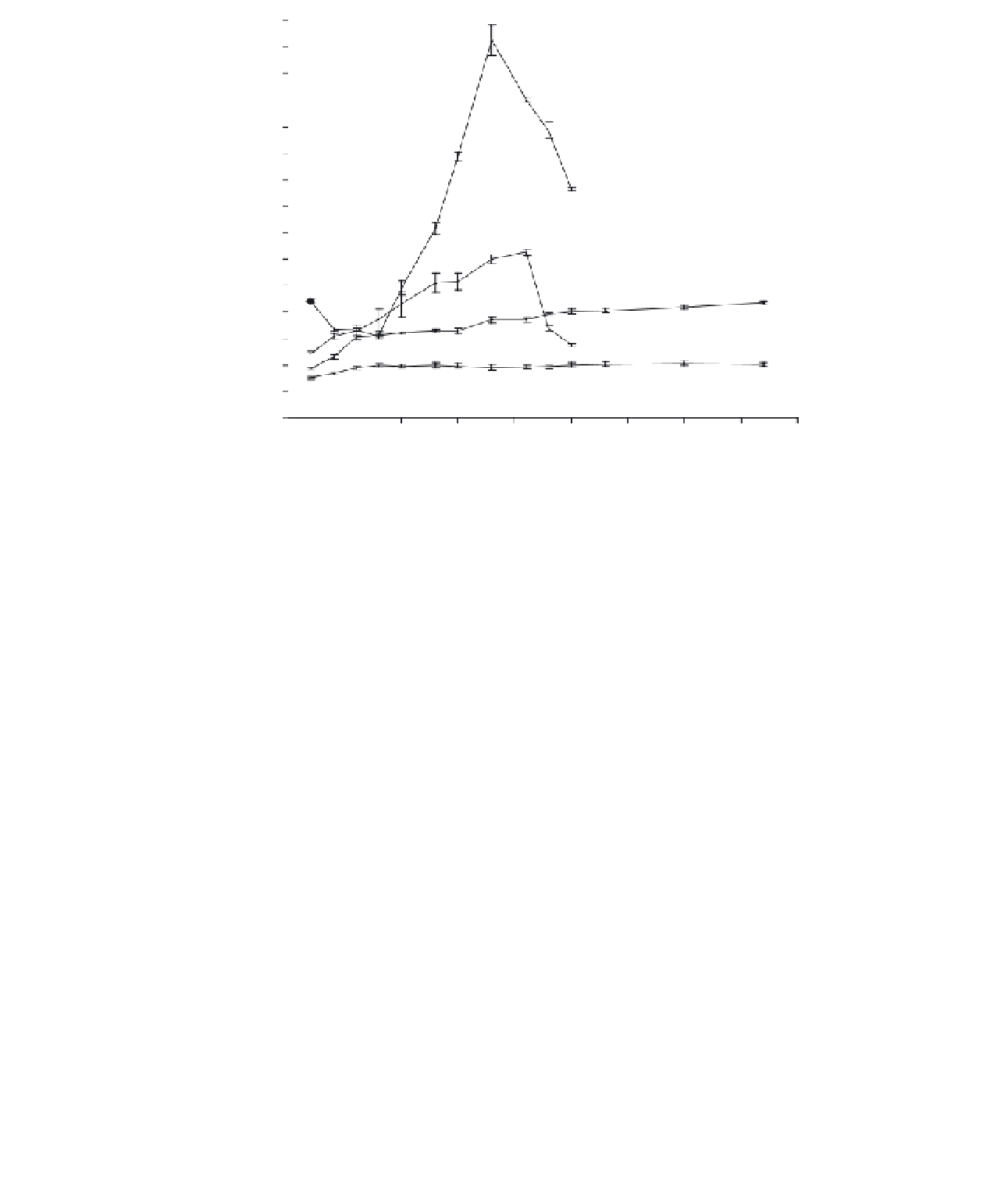Agriculture Reference
In-Depth Information
750
'Alphonso' 13
C
'Banganapalli' 13
°
700
C
°
650
'Alphonso' 8
C
'Banganapalli' 8
°
600
°
C
550
500
450
400
350
300
250
200
150
100
50
0
0
5
10
15
20
25
30
35
40
45
Storage period (d)
Figure 14.3.
Respiration rates of 'Alphonso' and 'Banganapalli' mango cultivars during storage at 8
◦
Cand
nonchilling storage temperature of 13
◦
C (source: Rao and Rao, 2009).
mango with an attractive and enticing color (Mercadante
and Rodriguez-Amaya, 1998).
Narayana (1989) observed chilling injury to be restricted
to surface of fruit during the initial stages which later pre-
disposed the fruit to attack by microorganisms. The CaCl
2
treatment was found to be effective in reducing the damage.
2,4-D treatment at 150 mg/liter could significantly allevi-
ate chilling injury (CI) or disease incidence of mango fruit
during 7 days storage at 4
◦
C and an additional 14 days at
20
◦
C. Fruit quality, including increased soluble solids, sol-
uble sugar, fruit firmness, and peel chlorophyll level, was
strongly improved by 2,4-D treatment. In addition, applica-
tion of 2,4-D to mango fruit also enhanced activities of an-
tioxidant enzymes and levels of endogenous ABA/GA3 and
decreased IAA levels, suggesting that 2,4-D could regulate
chilling resistance by changing the balance of endogenous
hormone levels.
Chilling injury
Various methods such as heat and cold treatments, applica-
tion of growth regulators and other chemicals, and storage
in modified and controlled atmospheres have been devel-
oped to alleviate chilling injury in mangoes.
Chilling injury symptoms have been reduced and/or pre-
vented with preconditioning of MG fruit using intermittent
warming techniques of 38
◦
C for 24 or 48 hours prior to
cold storage of 5
◦
C for 11 days (McCollum et al., 1993).
Cold-shock treatment at 0
◦
C for 4 hours significantly in-
hibited chilling injury in 'Wacheng' mango (Zhao et al.,
2006). Activities of catalase, ascorbate peroxidase, and
contents of glutathione and phenolic compounds in the
fruit during storage were all markedly enhanced by the
cold-shock treatment, whereas activities of superoxide dis-
mutase, glutathione reductase and content of ascorbic acid
were slightly influenced by the cold-shock treatment.
Exposure of mango (
Mangifera indica
cv. 'Tommy
Atkins') fruit to methyl jasmonate vapors (10
−
4
M) for
24 hours at 25
◦
C reduced chilling injury during subsequent
storage for 21 days at 7
◦
C followed by 5 days of shelf life
at 20
◦
C (Gonzalez-Aguilar et al., 2000, 2001).
Mango sapburn and its control
After harvesting, a conspicuous sap flow spurts out from
the abscission point of the fruit stalk. Mango skin injury
caused by exuding sap is an important economic problem
with mango industry. The sap seepage lasts up to 1 hour
depending on maturity, causing an undesirable aesthetic
sapburn on the fruit skin, with considerable economic loss.
This sticky latex browns and hardens, staining the fruit sur-
face and causing skin necrosis. The damaged areas of the
































Search WWH ::

Custom Search